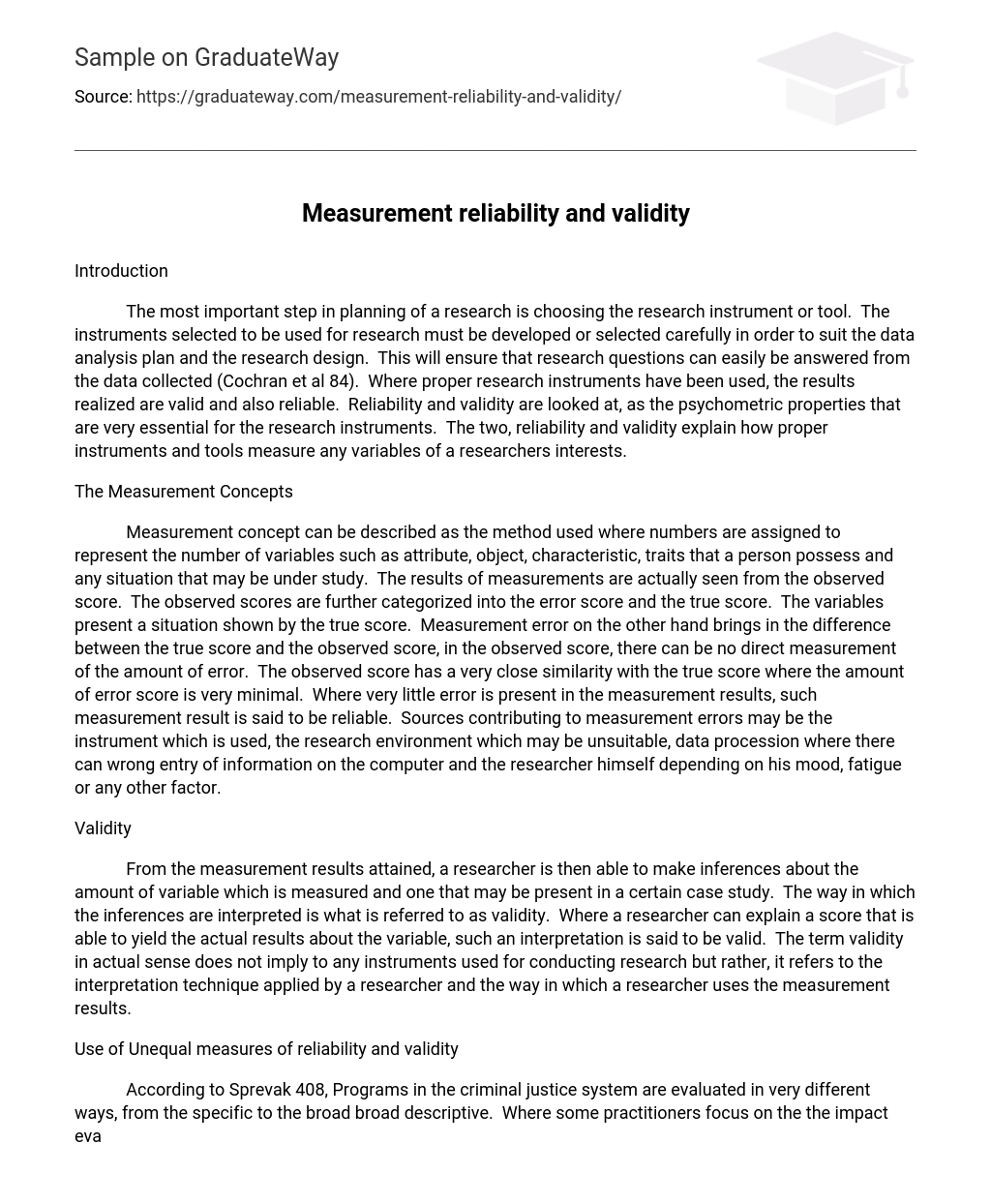Introduction
The most important step in planning of a research is choosing the research instrument or tool. The instruments selected to be used for research must be developed or selected carefully in order to suit the data analysis plan and the research design. This will ensure that research questions can easily be answered from the data collected (Cochran et al 84). Where proper research instruments have been used, the results realized are valid and also reliable. Reliability and validity are looked at, as the psychometric properties that are very essential for the research instruments. The two, reliability and validity explain how proper instruments and tools measure any variables of a researchers interests.
The Measurement Concepts
Measurement concept can be described as the method used where numbers are assigned to represent the number of variables such as attribute, object, characteristic, traits that a person possess and any situation that may be under study. The results of measurements are actually seen from the observed score. The observed scores are further categorized into the error score and the true score. The variables present a situation shown by the true score. Measurement error on the other hand brings in the difference between the true score and the observed score, in the observed score, there can be no direct measurement of the amount of error. The observed score has a very close similarity with the true score where the amount of error score is very minimal. Where very little error is present in the measurement results, such measurement result is said to be reliable. Sources contributing to measurement errors may be the instrument which is used, the research environment which may be unsuitable, data procession where there can wrong entry of information on the computer and the researcher himself depending on his mood, fatigue or any other factor.
Validity
From the measurement results attained, a researcher is then able to make inferences about the amount of variable which is measured and one that may be present in a certain case study. The way in which the inferences are interpreted is what is referred to as validity. Where a researcher can explain a score that is able to yield the actual results about the variable, such an interpretation is said to be valid. The term validity in actual sense does not imply to any instruments used for conducting research but rather, it refers to the interpretation technique applied by a researcher and the way in which a researcher uses the measurement results.
Use of Unequal measures of reliability and validity
According to Sprevak 408, Programs in the criminal justice system are evaluated in very different ways, from the specific to the broad broad descriptive. Where some practitioners focus on the the impact evaluation or outcome, others perform the evaluation of the process, whereases others prefer to use both methods. There is no wrong or right approach and there is no wrong or right answer. The choice of approach in the criminal justice system may even require that a practitioner apply a high or lower measurement reliability degree, compared to the validity measurement in order to achieve the results needed in the criminal justice system. Sprevak 412 observed that, in certain court cases, a legal practitioner applied a high validity degree by discriminating the criminals who had ever been married and were drug addicts as opposed to the those who were never married in order to determine the characteristic and traits of the criminal, in such a case the degree of reliability applied was very low.
Work Cited
Cochran William. Sampling Techniques Introduction, New York. John Wiley & Sons, Inc., 2007
Sprevak, Dan, Francisco Azuaje and Haiying Wang. A Non-Random Data Sampling Method for Classification Model Assessment.17th International Conference on Pattern Recognition (ICPR’04). Volume 3, 2004. pp. 406-409.
Research Methods for Criminal Justice and Criminology, Grantham University.





